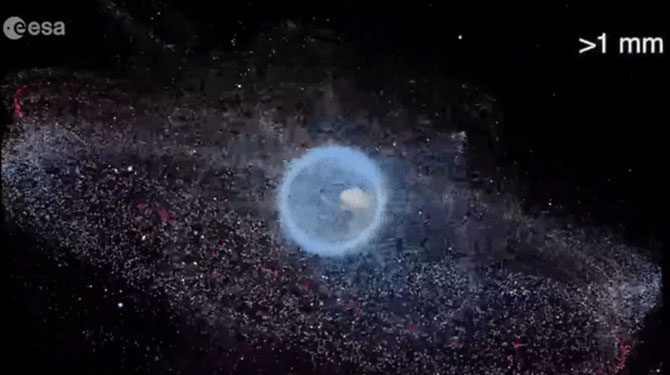According to new research, the low Earth orbit is already crowded with tens of thousands of satellites, and it may soon face a “choking” situation with even more satellites.
Experts from the International Telecommunication Union (ITU) predict that in the near future, there will be over 1 million satellites heading towards low Earth orbit for operation. This number is approximately 115 times the current number of functioning satellites orbiting the Earth.

The image visualizes space debris and active satellites around Earth, taken in 2019. (Photo: ESA).
Andrew Falle, a researcher at the University of British Columbia, emphasizes the urgent need for national and international regulations to address the sustainable challenges associated with satellites.
It is known that the addition of more satellites in low Earth orbit will lead to collision risks, obstruct light sources, and increase the likelihood of these satellites crashing back to Earth.
Most recently, in July, Aeolus—a 1/9-meter-long, defunct satellite—fell freely to Earth as anticipated by the European Space Agency (ESA).
Although the satellite landing zone is mostly uninhabited, this still raises concerns about potential accidents.
To address these concerns, as early as 2019, the ITU proposed critical milestones for satellite launches, requiring operators to meet a series of stringent requirements to deploy satellites into Earth’s orbit.
“Launching satellites is a welcome development, but certain limitations are necessary to manage the actual number of satellites operating in Earth’s atmosphere,” shared Ewan Wright, co-author of the study.
Low Earth orbit is inherently a limited resource belonging to all of humanity. Therefore, every organization and government needs to self-regulate to ensure there is room for other countries.
One proposal put forth by the ITU is to require companies to launch only 10% of their satellites within two years from the date of their first satellite launch. After that, they would be permitted to launch 50% of their satellites in the second year, and the remaining total in the seventh year.


















































